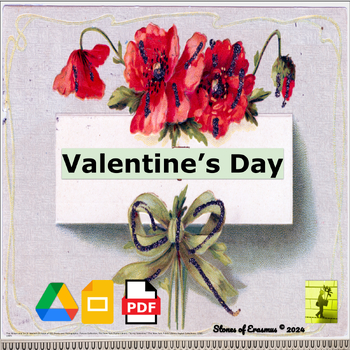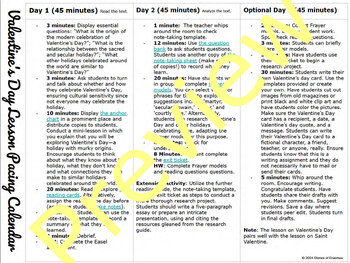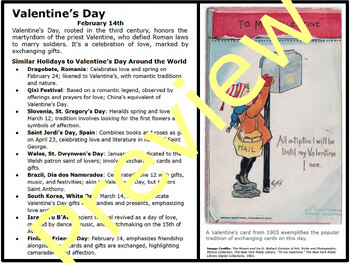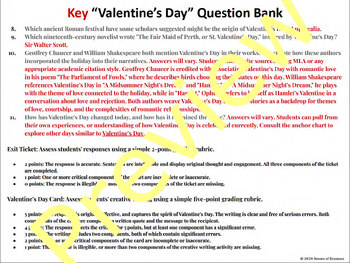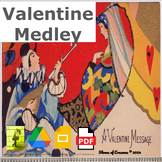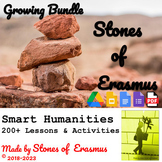Valentine's Day: The Origin of the Holiday | Middle and High School ELA Resource
- Google Drive™ folder
- Easel Activity
- Easel Assessment

Also included in
- Celebrate love in your middle and high school English Language Arts and Humanities classroom: Use a dynamic suite of resources to explore the lore surrounding the Greek and Roman figure of Eros (Cupid), his lover Psyche, the Christian martyr Valentine, and his popular holiday. Round off the unit witPrice $14.00Original Price $19.25Save $5.25
- Everything related to broadening the scope of a humanities curriculum for middle and high school is included in this growing bundle.☝211 and growing educational units! Entirely print + digital — Adobe Acrobat and Google Apps power each download. Extra addition: Includes free-to-use out-of-the-box EaPrice $590.00Original Price $906.85Save $316.85
Description
What is the origin of Valentine’s Day? Valentine's Day falls on February 14th. It is now celebrated as a day for lovers. However, its origins can be traced back to the third century in Rome, evolving through the Middle Ages into a day that celebrated courtly love, and eventually becoming known in contemporary times as a day for purchasing heart-shaped chocolates. This resource can serve as either an independent study packet or as a close reading activity. The lesson pacing guide provided is merely a suggestion; feel free to adapt it to suit your needs. Additionally, consult the "Further Reading Guide" to enhance this lesson with related books, websites, and articles. I imagine this resource being utilized in conjunction with any Valentine's Day-related unit you are sharing with middle and high school students!
This Resource Includes the Following Features:
- Access to Print and Digital Versions (PDF, Google Workspace, & Easel)
- Three-Day Lesson Calendar (with Teacher's Notes)
- 'Valentine's Day and Similar Celebrations' Anchor Chart
- To enhance cultural sensitivity and broaden students' perspectives, compare and contrast Valentine's Day with other global holidays that celebrate love. This approach fosters an understanding of diverse traditions and the universal nature of love across cultures.
- 1 Informational Text Reading Card —
- Why Do We Celebrate Valentine's Day?: Dictionary of Folk Culture and Holidays
- The reading card includes art and literature connections.
- 1 Note-taking template
- 11-count Question Bank
- The question bank is versatile and fits the needs of both teachers and students.
- Valentine's Day Cards
- 3 Custom-made cards
- 1 Card Template
- Includes both color and black and white versions (for easier printing)
- 1 Exit Ticket
- Exit tickets are a way to get data about your students' understanding of the lesson right before the class is finished. Collect these exit tickets and quickly see what your students have learned.
- Pro Tip: Use the exit ticket as the basis for the research and writing assignment.
- Frayer Model Vocabulary Template (with one student sample)
- Frayer models are a way to get kids to think about vocabulary visually in a four-section square — A square for meaning, one for examples, another for non-examples, and a sketch. It is impressive to see the work they produce. A great way to decorate your classroom to showcase your kids' vocabulary-in-text understanding. The cards can contain terms, geography, and challenging words (as well as contextual entries that fit the text).
- 1 Further Reading List
- Don't disregard this further reading list if you think it is merely a bibliography. Share the list with your students or have them do projects based on the available research. Assign different sources to students and organize presentations where learning can go deeper into the story.
- Answer Key for all student-facing documents
I created this resource with middle and high school students in mind. It is designed to be part of Valentine's Day's thematic English Language Arts and Humanities lesson!
- Find love with these fantastic resources:
You can navigate your web browser to my website, Stones of Erasmus, to follow me. © 2024 stonesoferasmus.com

